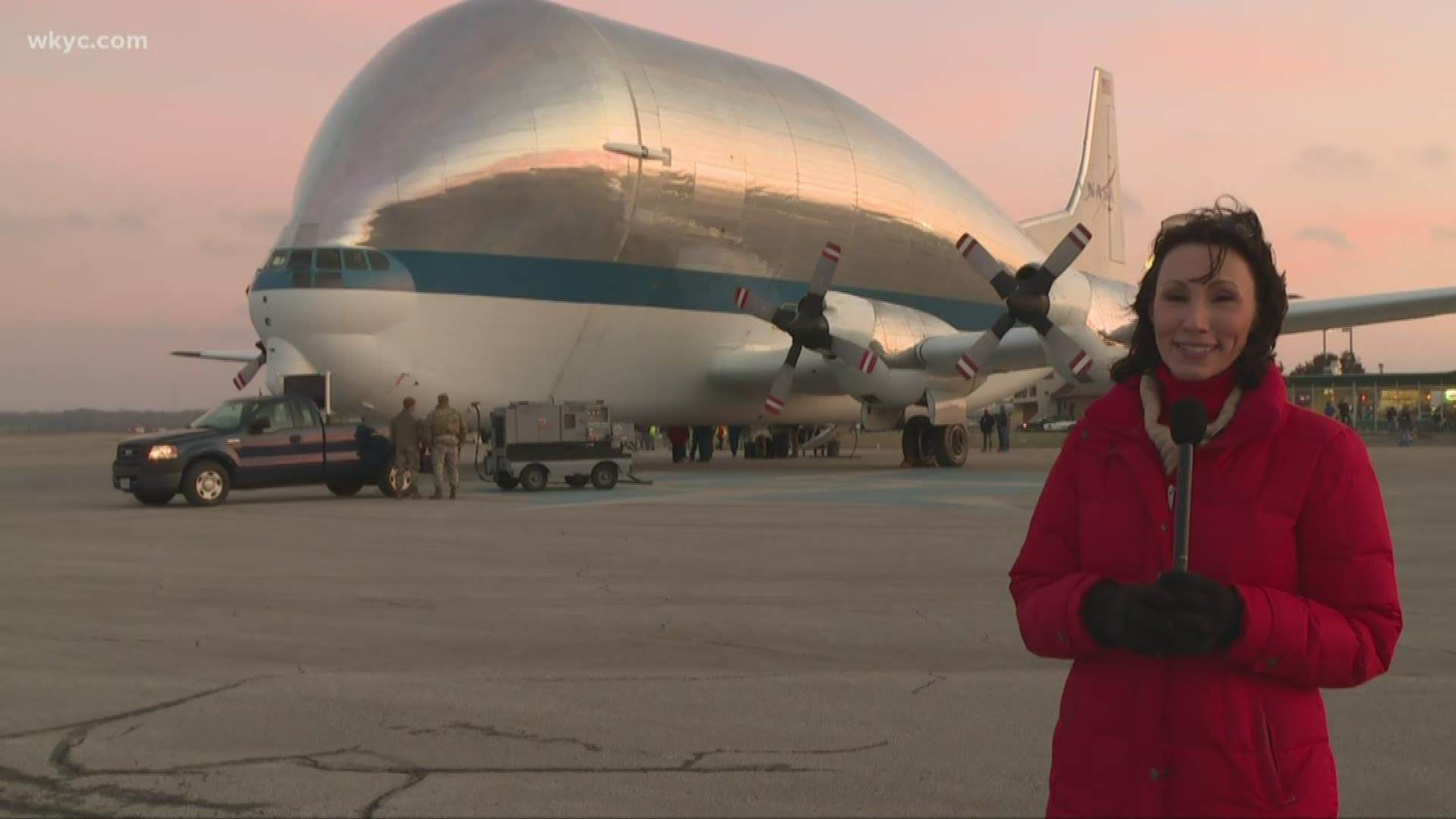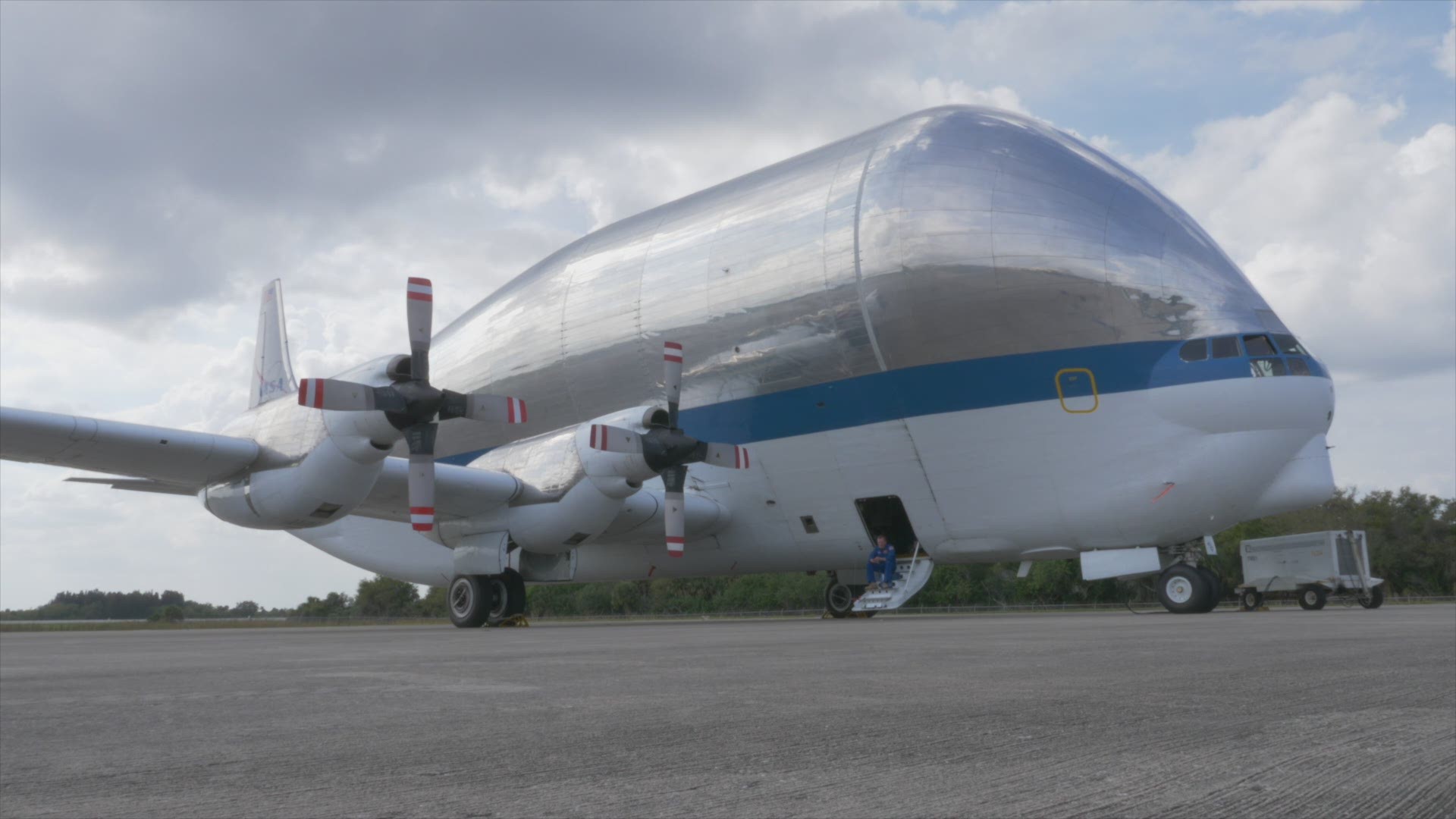SANDUSKY, Ohio — The capsule that will carry America's space program into the future arrived at Mansfield's Lahm Airport on Sunday.
The Orion capsule and its service module are in Ohio for a series of tests at NASA's Plum Brook Station in Sandusky. It was originally supposed to arrive in Richland County around 2:30 p.m., but strong winds delayed the flight about two hours.
While there was some doubt as to whether or not the aircraft would make it to Northeast Ohio, 3News' Betsy Kling confirmed the mission was indeed a go. Wind speeds slowed to about the 10-knot range, which isn't perfect, but still good enough to land.
The massive "Super Guppy" aircraft carrying the capsule landed just before 4:45 p.m., with a large crowd of people there to greet it. Kling reported live from the scene as it sped along the runway.
Part of the Artemis I mission, the capsule will face the rigor's of space in Plum Brook's Space Environment Complex, home to the biggest vacuum chamber in the world.
"“[The vacuum chamber] is a real sports car," says David Stringer, director of Plum Brook station. "It can get down from normal Earth pressure about 14.7 PSI to half a pound per square-inch in two hours,” Stringer said. “We can get to a so-called hard vacuum in six more hours, so in eight hours, we are able to get from normal Earth pressure to space conditions.”
Plum Brook started as a TNT plant for the U.S. Army in 1941.
After the war, Plum Brook was idled until NASA took possession to build a reactor to assist with the development of nuclear power for space flight before it was idled a second time.
“In 1986 they began to reactivate this station because they wanted to test radiators for the ISS,” Stringer said. “They did, and we've been testing ever since.”
Plum Brook has already tested parts for the Artemis missions before and many have been brought there the same way Orion will arrive, in a special plane called the Super Guppy.
The Guppy is a special modified plane that can carry over-sized cargo all around the country. It’s flown parts for the space shuttle, the International Space Station and the Orion capsule. Among those flying the massive plane will be NASA Glenn pilot Mark Russell.
Even tough Russell has 22 years of flight experience, the massive plane isn’t easy to fly.
“This is humbling. That's how I felt the first time I flew it. And the first landing I had, it felt like a controlled crash."
Of the five remaining Super Guppies in existence, NASA’s is the only one still in service and was the last one built, coming off the production line in the early 80s. Because of that, the technology is a little behind the times.
There’s no on-board computer, meaning there’s no autopilot, and the latest technology on-board came from the 1990's.
For Russell, being at the controls also means he’s in elite company, because more people have piloted the space shuttle than the Super Guppy.
Once Orion arrives in the Super Guppy and it makes the 44 mile trek to Sandusky, the real tests begin.
“The main purpose of the test is to make sure the Orion capsule and the service module can live up to how it was designed,” says Bob Kowalski, the facility manager at Plum Brook's Space Environment complex. “It's designed to shake out, it's a qualification test, so you're basically proving that it meets its requirements.”
Much like a car needs to face a road test before it goes into production, the Orion capsule will need to face the extremes of space before it goes there.
“There are over 1,500 pieces of instrumentation that will go on this thing,” said Nicole Smith, the Orion project testing manager. “We pump all of the air out of the chamber and hold it like that for the entire duration of the test.”
After the test -- pass or fail -- the Orion capsule will be loaded back on a truck, back onto the Super Guppy and taken back down to Kennedy where necessary repairs will be made; or it will be attached to the rest of the system, the service module and Space Launch System rocket, and prepared for the mission dubbed Artemis 1, set to launch in late 2020.
Watch 3News full Orion special below:


